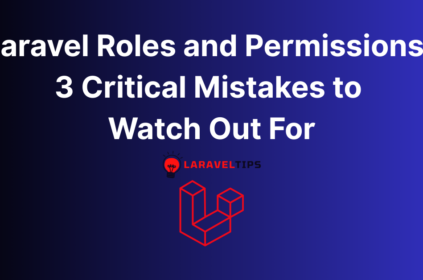Laravel is a powerful PHP framework widely appreciated for its elegant syntax and robust features. Among its many utilities, factories and seeders play a vital role in generating fake data, which is crucial for testing, development, and initial database setup. However, even seasoned Laravel developers can overlook some of the more nuanced capabilities these tools offer.
In this article, inspired by insights from Laravel Daily, we dive into five lesser-known but incredibly useful tips about Laravel factories and seeders. These tips stem from a comprehensive tutorial that thoroughly explores the nuances of factories and seeders, revealing hidden gems that can optimize your workflow and improve your code quality.
Introduction to Laravel Factories and Seeders
Before we jump into the tips, let’s briefly clarify what factories and seeders are in Laravel:
- Factories are classes designed to define how to generate fake data for your models. They allow you to create dummy data that mimics your application’s real data structure, which is especially useful during testing.
- Seeders are classes that allow you to insert this fake data into your database in an organized way. They are typically used to populate your database with initial or test data quickly.
Although these tools seem straightforward, there are subtle differences in usage and powerful techniques that can enhance their effectiveness. Let’s explore five tips that will deepen your understanding and improve your Laravel development practice.
Tip 1: Understanding the Difference Between Database Seeders and Separate Seeder Classes
One of the first questions many developers ask is whether to put seeding logic directly inside the DatabaseSeeder class or create separate seeder classes using the make:seeder artisan command. Both approaches work, but there’s a key advantage to separating seeders.
When you create individual seeder classes and then call them from DatabaseSeeder, running php artisan db:seed will output the time taken by each seeder separately. This gives you valuable insight into which parts of your seeding process are the most time-consuming.
“If you run all the create commands inside of the
DatabaseSeeder, you will just see ‘Seeding database’ and that’s it. You will not see in the terminal how much time it took.”
Here’s why this matters: when your project grows, seeding can become a lengthy process. Knowing which seeders are slowing things down helps you optimize or debug specific areas without guessing.
Tip 2: Using Attribute Callbacks to Reference Other Columns in Factory Definitions
Factories are not just about generating random data—they can also create intelligently related data based on other attributes. Laravel allows you to define factory attributes using callback functions that receive all other attributes as parameters.
This means you can conditionally set values depending on other fields. For example, you might only want to set an activated_at timestamp if the active attribute is true.
Here’s a conceptual example:
'activated_at' => fn(array $attributes) => $attributes['active'] ? now() : null,
Another practical example involves polymorphic relationships, which can be tricky. Suppose you have a factory for a model with polymorphic columns such as honorable_id and honorable_type. The honorable_type can be either a Customer or a Professional, and honorable_id should reference the corresponding record’s ID.
Using attribute callbacks and Laravel’s match expression, you can dynamically create related records and set the correct IDs during factory creation, making your fake data more realistic and relationally consistent.
Tip 3: Leveraging Sequence Factories for Variations in Data
Imagine you want to create multiple users where everything is identical except for one or two fields, such as names or role IDs. Laravel’s sequence method allows you to specify different values for each record generated in a factory in a clean and elegant way.
For example, you can define a sequence like this:
User::factory()
->count(3)
->sequence(
['name' => 'Alice'],
['name' => 'Bob'],
['name' => 'Charlie']
)
->create();
This will create three users with the specified names, while other attributes remain as defined in the factory defaults.
You can also extend this concept to multiple fields and even create related models within the sequence. For instance, you might want to assign a unique role to each user by creating a new role record inside the sequence callback.
One advanced use case involves generating multiple users with roles and related records, such as 10 users each with a distinct role and associated data. By combining sequences with callback functions, you can implement custom logic that ties the data together seamlessly.
This approach simplifies complex data generation scenarios, making your tests and seed data more flexible and maintainable.
Tip 4: Using the afterCreating and afterMaking Methods for Post-Processing
Sometimes, you want to perform additional actions after a model has been created or instantiated by a factory. Laravel provides afterCreating and afterMaking methods to hook into these moments.
Consider a scenario where you have a Product factory. For each product created, you want to automatically create several variations and some fake reviews. Instead of manually creating these related records each time, you can define this logic inside the factory using afterCreating:
Product::factory()
->afterCreating(function (Product $product) {
Variation::factory()->count(3)->create(['product_id' => $product->id]);
Review::factory()->count(5)->create(['product_id' => $product->id]);
})
->create();
This method ensures that whenever you create a product with the factory, related data is generated automatically, keeping your tests and seed data consistent.
Some might argue that Eloquent observers could handle this logic, and while that’s true, the use cases differ:
- Observers are global and affect all instances of the model throughout the application.
- Factory callbacks are scoped to testing and seeding scenarios, providing more control and avoiding side effects in production code.
Therefore, using afterCreating in factories is the recommended approach when you want to generate related fake data only during testing or seeding.
Tip 5: Understanding the Difference Between make() and create() in Factories
Most Laravel developers are familiar with create(), which generates a model and saves it to the database. However, there’s also make(), which creates a model instance in memory without saving it.
When would you want to use make()? One practical example is generating data for export or manipulation without persisting it. For instance, if you want to generate fake user data to export into a CSV file, you don’t need to save those users in your database. You can use factories to generate the data in memory and then format it as needed.
Here’s a simple conceptual snippet:
$users = User::factory()->count(100)->make();
foreach ($users as $user) {
// Process $user data for CSV export
}
This technique keeps your database clean and focuses on generating data for specific tasks beyond testing or seeding.
Also, understanding the difference between afterMaking and afterCreating is important here:
afterMakingtriggers aftermake()and allows you to manipulate the model instance before it’s saved (or in this case, not saved).afterCreatingtriggers aftercreate()and is used when you want to perform actions after the model exists in the database.
Choosing the right method for your use case can make your data generation more efficient and purposeful.
Conclusion
Laravel factories and seeders are incredibly powerful tools that go far beyond simple data generation. By understanding the nuances and lesser-known features, you can create more realistic, efficient, and maintainable fake data for your applications.
To summarize, here are the five tips to keep in mind:
- Separate Seeder Classes: Use individual seeder classes for better performance insights and organization.
- Attribute Callbacks: Reference other factory attributes dynamically to create relationally consistent fake data.
- Sequence Factories: Use sequences to create variations in multiple records cleanly and efficiently.
- After Creating/After Making Methods: Automate post-processing like creating related models during factory execution.
- Make vs Create: Use
make()to generate models in memory without saving, ideal for data exports or manipulation.
Mastering these tips will not only improve your workflow but also help you write better tests and seeders that closely mimic real-world scenarios.
If you’re serious about mastering Laravel factories and seeders, investing time in such in-depth tutorials can be a game-changer for your development process.







